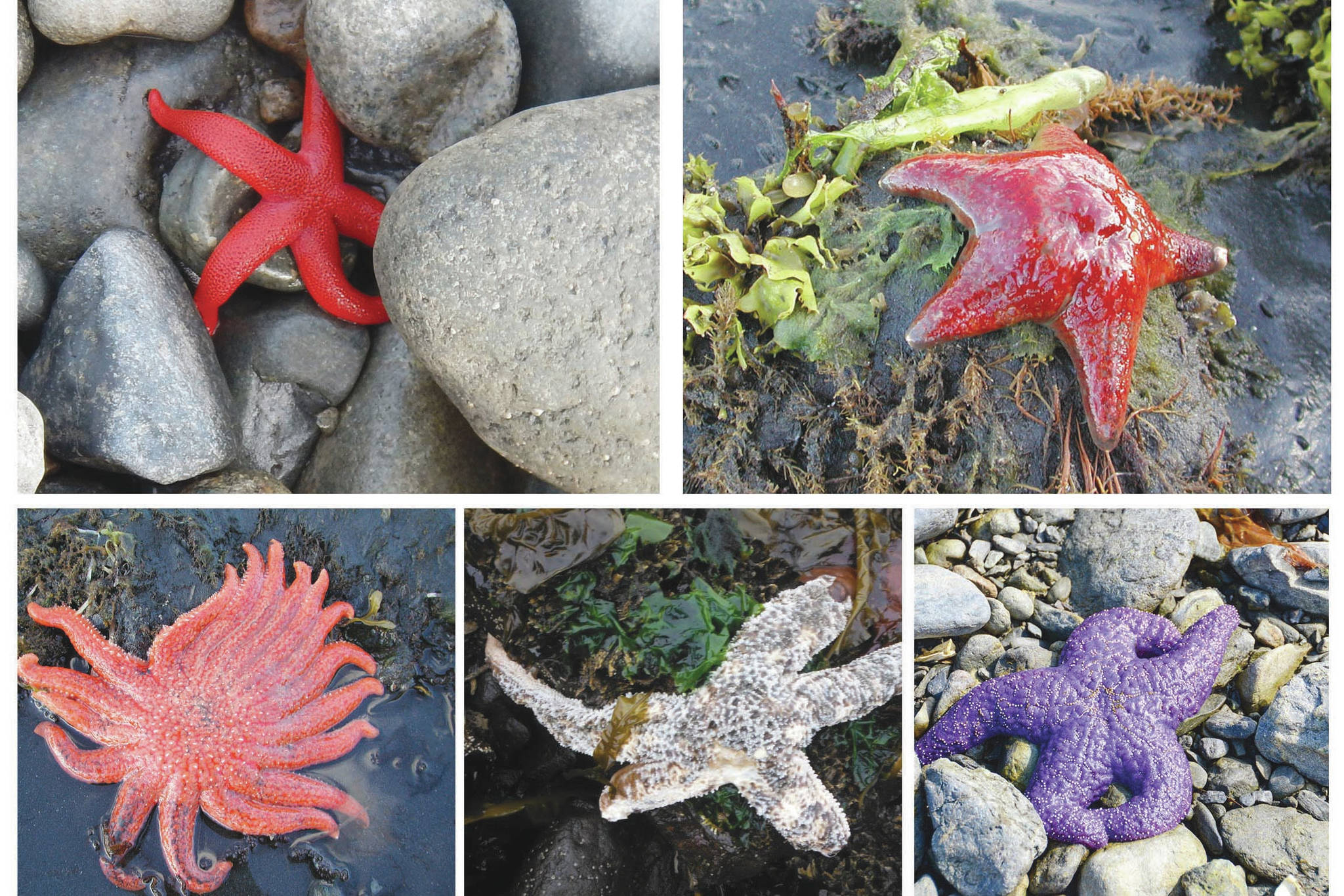Sea stars are a keystone species. As a top predator, they can restructure intertidal communities. For example, by feeding on mussels, they open up limited “real estate” in the intertidal zone for other species to move in.
Sea stars, like other intertidal species, can tolerate extreme conditions such as the pounding of waves, heat and desiccation when exposed during low tide. However, the unusually warm waters during the 2014 to 2016 marine heatwave may have facilitated the spread of sea star wasting syndrome and caused sea star populations in the northern Gulf of Alaska to crash beginning around the same time.
The recent sea star die-off event began in the Eastern Pacific Ocean, or the West Coast, in 2013 and hit Alaska in 2014. In the warm ocean waters, the disease expanded. This event impacted 20 species of sea stars from Mexico to Alaska and decimated many sea star populations across the northern Gulf of Alaska.
Symptoms of sea star wasting syndrome include abnormally twisted arms, white lesions, deflation of arms and body, arm loss, and body disintegration. Death occurs over the course of days to weeks.
Currently, the disease is thought to result from an imbalance in the sea star’s microbiome (microorganisms in a particular environment), combined with environmental stress, such as extreme heat and low oxygen. A proliferation of bacteria on the surface of sea stars leads to reduced oxygen, which essentially causes the star to suffocate.
Decaying stars exacerbate the situation by providing even more organic material for the bacterial communities to flourish. Impacts vary by species and site conditions and there is still a lot to learn as more information becomes available.
Much of what we know about the effects of the disease in the Northern Gulf of Alaska stem from our long-term nearshore monitoring activities there. The Gulf Watch Alaska program, a consortium of agency and university cooperators, conducts surveys at multiple rocky intertidal sites in four regions: Western Prince William Sound, Kenai Fjords National Park, Kachemak Bay, and Katmai National Park and Preserve.
Based on our observations, prior to the die-off, sea stars were abundant in the Northern Gulf of Alaska and exhibited high species diversity across regions, largely due to differences in fetch, tidal range and the proximity of tidewater glaciers in each location.
While it appears that the disease has abated, the density and diversity of sea stars remains low at our monitoring sites. The precipitous loss of some species reduced the species diversity that once existed across regions, making these once-unique sea star communities more similar across the Northern Gulf of Alaska.
We found that species composition is now more closely correlated with the slope of the shore, fetch and tidal range, which may be a reflection of the surviving sea star species being less influenced by tidewater glaciers (freshwater melting) and more strongly influenced by slope (desiccation).
Sea star species that are currently present are those that were not impacted by sea star wasting syndrome. In 2020, the sea star species thought to be unaffected by the disease continued to be present (primarily blood star and leather star).
The once dominant sea stars that were killed by the disease continue to be rare or absent (primarily sunflower star, mottled star and ochre star). Areas in Alaska devoid of sea stars for multiple years have enabled prey species, such as mussels, to flourish.
As sea stars were lost from the system, we began to watch how other species in these intertidal communities responded to changes in the predator population. What we continue to learn from the sea star die-off helps us understand intertidal communities, the species that thrive there, and the environmental variables that influence them.
This article builds on the collective efforts of Gulf Watch Alaska, Nearshore Component (https://gulfwatchalaska.org/monitoring/nearshore-ecosystems-4/). Collaborators include Dr. Sarah Traiger of the U.S. Geological Survey and other scientists from National Park Service, USGS, University of Alaska Fairbanks, National Oceanic and Atmospheric Administration and Coastal Resources Associates, Inc.
This article is based on a journal article, “Wasting disease and static environmental variables drive sea star assemblages in the Northern Gulf of Alaska,” by Dr. Brenda Konar at UAF and others, which appeared in the Journal of Experimental Marine Biology and Ecology in November 2019.
Heather Coletti is a marine ecologist with the National Park Service Southwest Alaska Inventory & Monitoring Network. Marine and coastal ecosystem research and monitoring is conducted by a collaboration of many agencies, organizations, and volunteers. This article presents our collective work. Find more Refuge Notebook articles (1999–present) at https://www.fws.gov/refuge/Kenai/community/refuge_notebook.html.
By HEATHER COLETTI
For the Clarion


